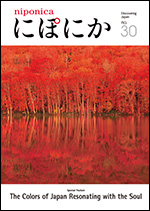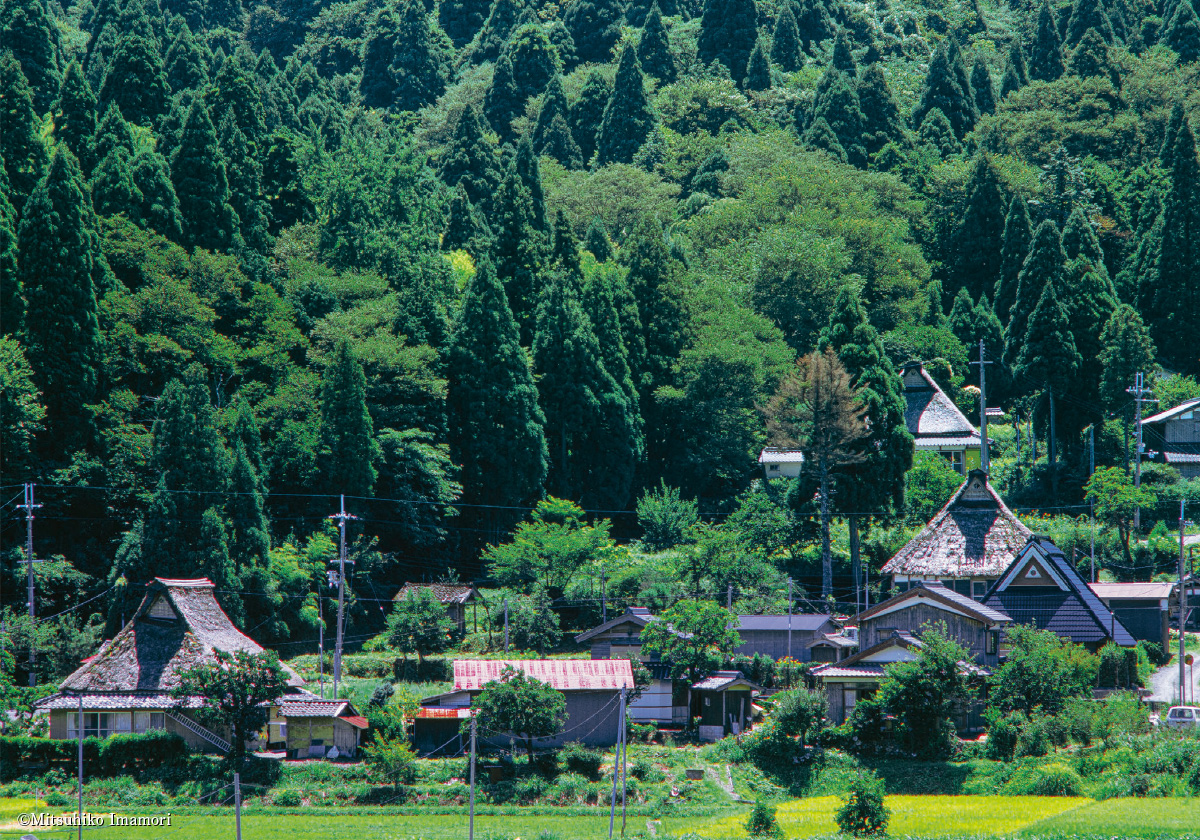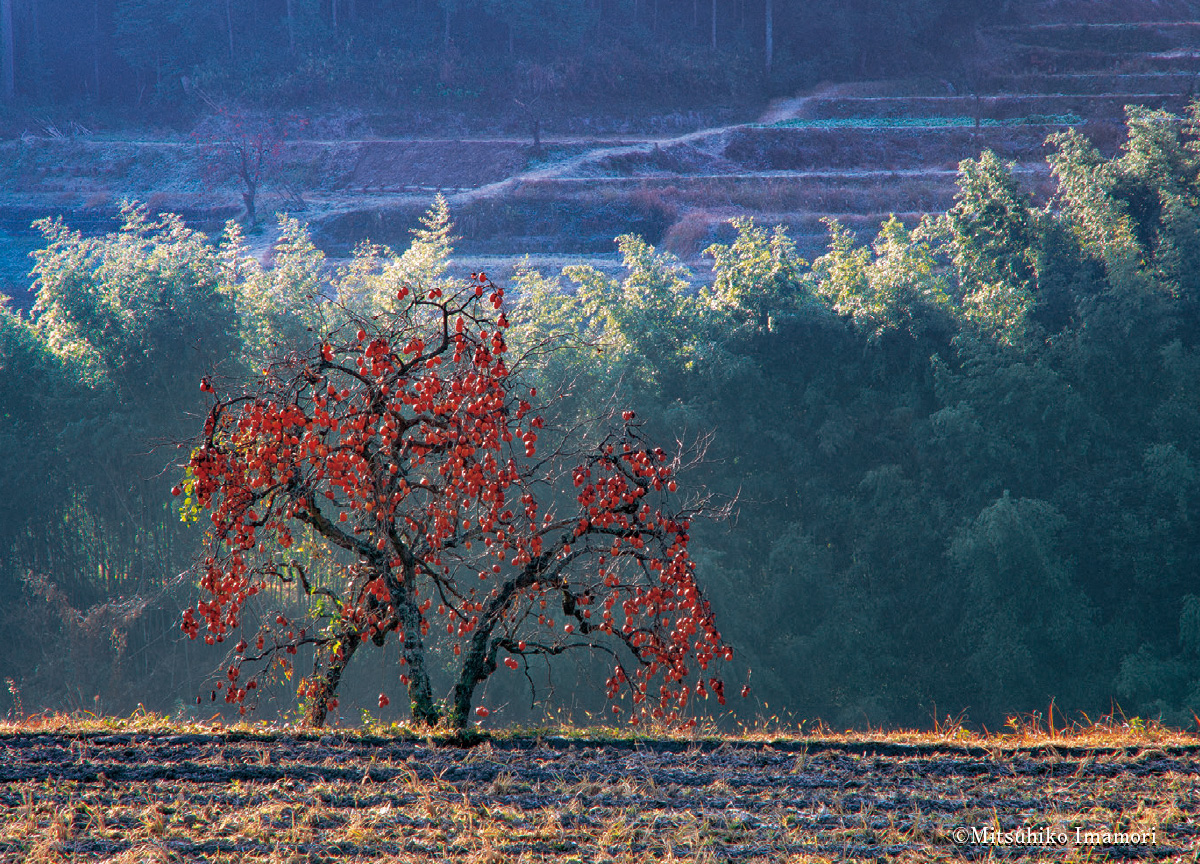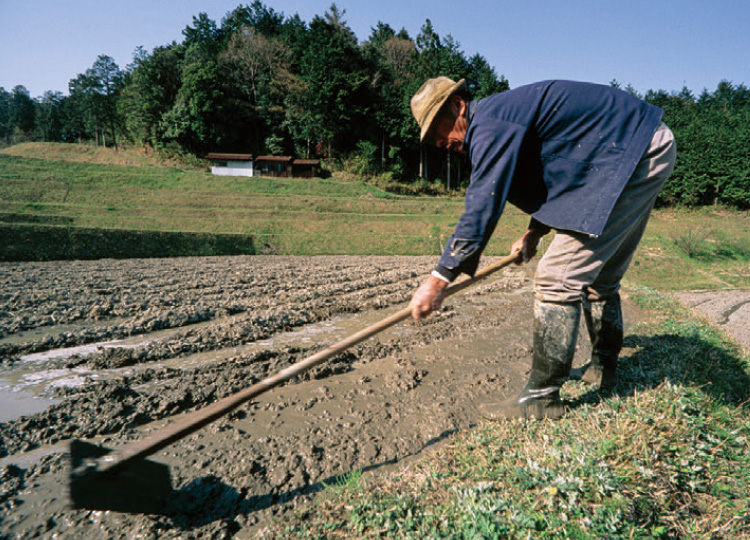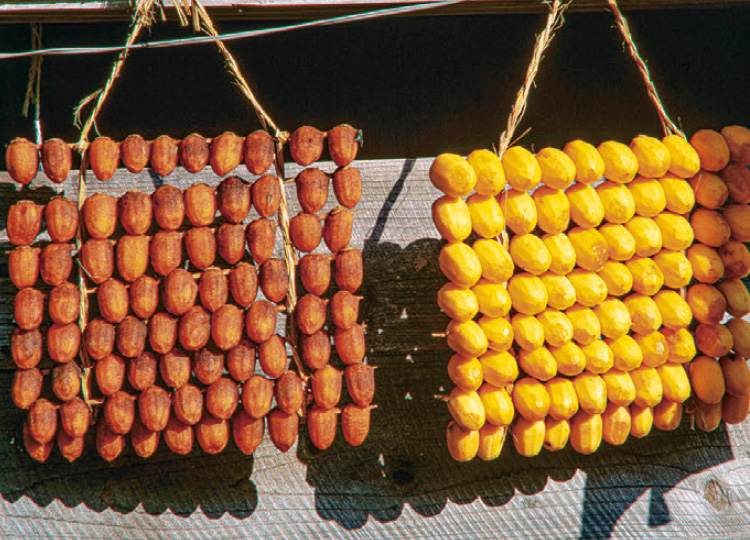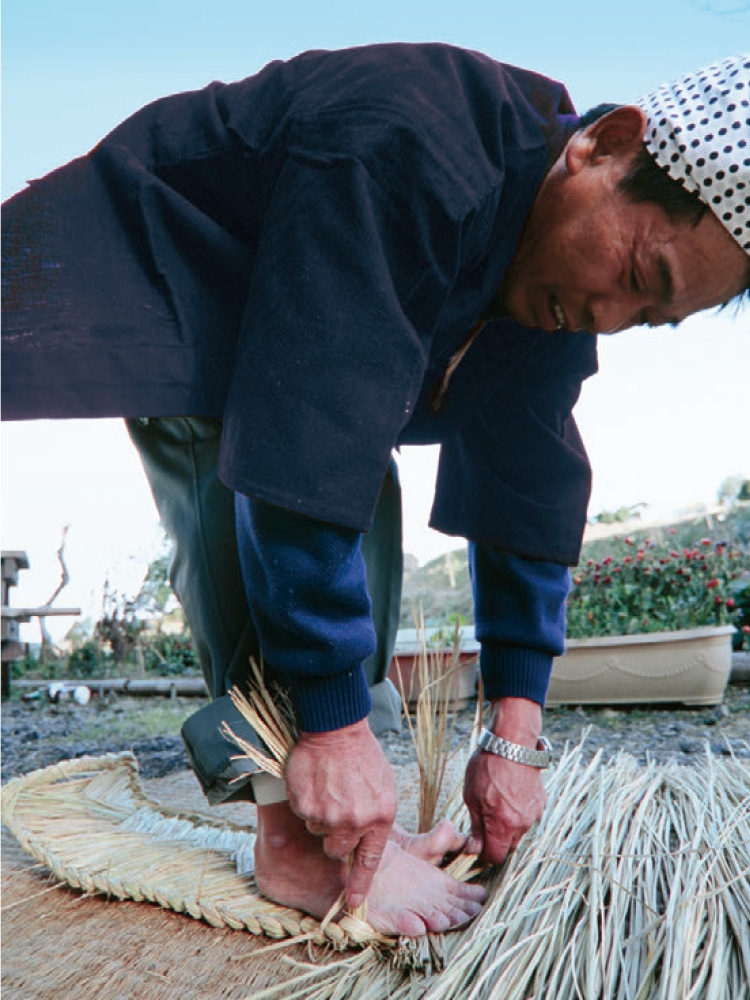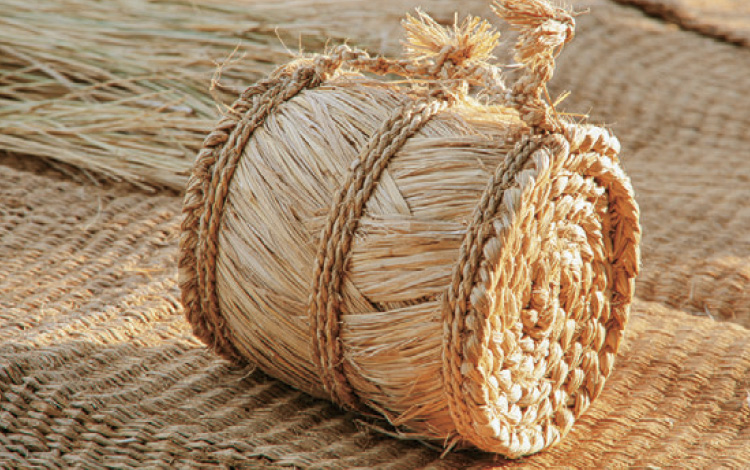
2021 NO.30
MenuThe Colors of Japan Resonating with the Soul

Colors in the Village:
Nostalgic Landscapes are Gifts for the Future
A very familiar view of the satoyama. The mountains in the background tower protectively over the houses. This is surrounded by a mixed forest, while green fields can be seen in the open terrain toward the foreground.
Photography: Imamori Mitsuhiko
For the Japanese people, the word satoyama (literally meaning “village and mountain”) resonates warmly and invites nostalgia, evoking memories of their own hometown. Satoyama are regions where an environment has been formed through a moderate approach by people to nature, and there are, for example, rice paddies, streams, fields, and mixed forests. Here, the coexistence of people and nature has shaped the life wisdom and skills that have been passed down over the generations.
For example, people used the satoyama to collect energy and resources such as firewood and building materials, and food such as wild vegetables. By protecting the habit of various flora and fauna, they also developed a unique ecosystem. This has linked to biodiversity in the satoyama, and their rich bounties are precious assets to the people of Japan.
However, in recent years, the decreasing population of rural communities as well as other factors have brought about the neglect and deterioration of the satoyama, causing landslides and negatively impacting wildlife through reduced biodiversity. To preserve the satoyama, which are cherished natural environments that must be maintained for future generations, we must find new ways of engagement that harmonize with the lifestyles of people, such as through initiatives that link to local industries.
Concerned with the conditions of the satoyama, the photographer Imamori Mitsuhiko has settled near Lake Biwa, the largest freshwater lake in Japan, in Shiga Prefecture. His ongoing focus has been to capture the activities of people who live there, as well as to portray living things such as flowers, trees, and insects in their natural environment. He popularizes and advocates for the importance of life in the satoyama by depicting the charm of villages—a familiar and nostalgic sight to the Japanese people—in a poetic fashion. “I don’t consider myself to be shooting the demise of the satoyama,” says Imamori. “These are landscapes for the future.” Rather than simply considering it to be a subject of sentimentality, he may be envisioning the true form of the satoyama: a space of symbiosis for all life.
①Rice field ridges are created in the spring. These are like levees, made by creating mounds of soil between rice fields. Hoes are used to meticulously knead and heap the soil so that water does not flow out.
②Shibugaki (a type of persimmon) are hung under the eaves to become hoshigaki (dried persimmons). The drying process removes the astringency, making the fruit sweet and delicious.
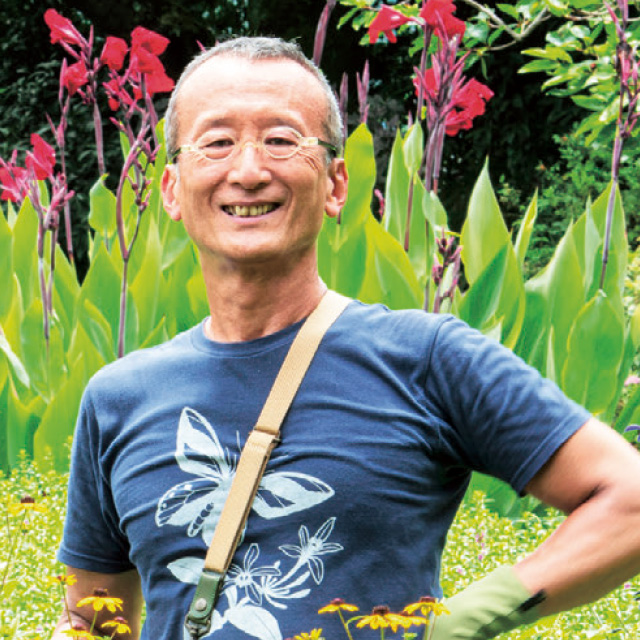
Photographer Imamori Mitsuhiko
A leading photographer of the satoyama. Based in his atelier with a view of Lake Biwa in Shiga Prefecture, he shoots photos with themes of both natural surroundings and the relationship people have with nature. He has also often traveled to and documented remote regions from tropical rainforests to deserts throughout the world, and is highly acclaimed internationally as well. He has been recognized with many awards, including the Regional Cultural Merits Award from the Minister of Education, Culture, Sports, Science and Technology, Japan.

